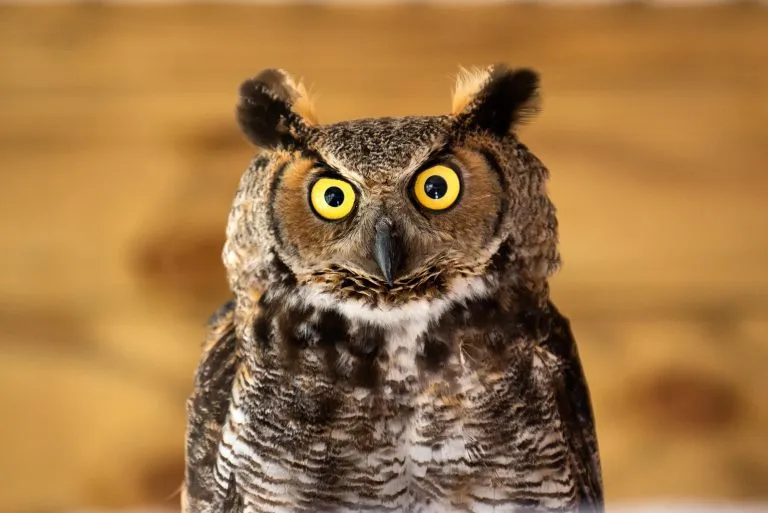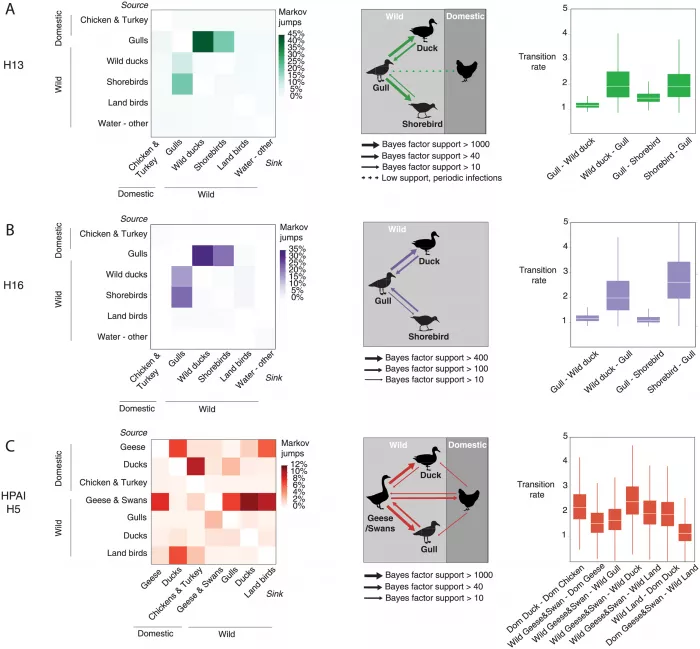A new study by researchers at Tufts University details which bird species are "super communicators" of highly pathogenic avian influenza Jonathan runstadler, professor and head of the Department of infectious diseases and global health at the Cummings veterinary school at Tufts University, said: "the scientific community has been used to talking about influenza viruses as a group, but birds are an incredibly diverse group of animals with different natural histories, physiology and anatomy."
Runstadler was published in [PLoS pathogens] on May 19( https://journals.plos.org/plospathogens/article?id=10.1371/journal.ppat.1010062 ) 》One of the authors of a new study in the journal, which is data-oriented, examines the influenza virus circulating in different bird populations and describes which types of birds are involved in the transmission of the virus. The timing of this paper is impeccable because a highly pathogenic strain of avian influenza has spread in North America.
This strain of bird flu originated around 1996 and was first found in a domestic goose. The virus mutated and persisted. The first major outbreak of wild birds occurred in a major wetland in Central Asia around 2005. The subsequent changes of the virus led to its introduction into the United States through the Pacific Northwest in 2014, which seriously affected the domestic poultry industry in the United States and was forced to slaughter about 40 million turkeys and chickens as a control measure.
"It's a big blow," said lead author Nichola hill, an associate professor of biology at the University of Massachusetts, Boston. "After it's over, we know we're in between outbreaks, and there's a great possibility of another outbreak. We think we need to study long-term, historical data to find patterns and determine which birds are really driving global transmission. Therefore, we compared birds on a more refined taxonomic scale than previous studies, such as wild ducks, seagulls, land birds and livestock and poultry such as geese and chickens I made some very interesting discoveries. "

Historically, ducks such as wild ducks have been considered "super communicators" of bird flu, infecting wild birds and backyard poultry. Hill and runstadler's research found that this is roughly true. Wild ducks are powerful tools for spreading viruses and evolving viruses in wild bird libraries. They can carry highly pathogenic strains and have no symptoms at all. In addition, they can swim and fly, so they can spread the virus in various ways, including entering local water bodies.
But there are other birds that play a greater role in spreading the virus. "When we look at which birds are responsible for spilling into poultry, there are signs that wild geese are really good at amplifying the virus," Hill said. "We need to understand the reasons from their host pathology, immunity, behavior and ecology."
One possible ecological factor is that geese are terrestrial herbivores that thrive in urban and agricultural environments. Many goose species in North America and Europe are considered harmful. "They are really the perfect spillover hosts because they can take advantage of human altered habitats," hill added.
In addition, understanding which birds drive long-distance transmission may affect how or when the virus enters a new geographical area. For example, the 2014 epidemic entered the United States through the Pacific Ocean, which is likely to be carried by ducks, but the current epidemic entered the United States through the Atlantic Ocean, and ducks may not be involved to the same extent.
"The first wild bird detected in 2021 was the big black backed gull," Hill said. "Seagulls are strong, long-distance, upper middle flyers. They use the tail wind to fly on the ocean and spread the virus very quickly."
In North America, the outbreak of bird flu on such a scale is unprecedented. In the current North American epidemic, about 40 species of birds have been infected, including songbirds such as crows and sparrows, and raptors such as owls and eagles. Compared with the outbreak in North America in 2014, the epidemic has a larger geographical scope and affects more species.
"Knowing that seagulls, geese and ducks may spread the virus in different ways is a great contribution to understanding or ultimately more accurately simulating how we expect viruses like this to spread," runstadler said. "Eventually, we can put these data into a model that allows us to predict whether a virus appears, when the virus may enter North America, and which bird groups we may monitor to detect it."
Runstadler began studying bird flu in 2005, when his laboratory was located at the University of Alaska Fairbanks, and the H5N1 strain appeared in East Asia. Scientists in his laboratory study the ecology of influenza viruses in wild animal hosts, including birds, which are the main reservoir of influenza. Runstadler said most influenza viruses are thought to originate in birds and spread to other hosts.

Runstadler's laboratory regularly works with Maureen Murray, director and director of tufts wildlife clinic (a clinical associate professor at Cummings College), to collect samples from various birds passing through the clinic, not just those with clinical symptoms of avian influenza. Its purpose is twofold: to understand the epidemiology of the virus and to safely manage avian influenza cases in clinics.
"When we take new birds into the clinic, we sample them to see if they carry the virus and isolate them until we get a negative test to make sure we don't expose other patients to the virus," Murray said
These samples were screened in runstadler's laboratory to determine whether a bird carried the influenza virus and, if so, whether it was the H5 strain responsible for the outbreak. Runstadler pointed out that the work of collecting data now is crucial for future data comparison. If a bird tests positive, the sample will be sent to the U.S. Department of agriculture's National Veterinary Service Laboratory for additional testing and sequencing as final confirmation.
"We have seen some positive birds passing through clinics, including bighorn owls, snow owls, vultures and peregrine falcons," Murray said. "But fortunately, there are not many cases."

Risks to humans
Although avian influenza is a zoonotic disease, the risk to humans is very low. Runstadler said that for ordinary people who are in daily life, the threat is actually zero. For people who often deal with birds, such as wildlife experts, poultry workers or backyard chicken owners, the risk is slightly higher.
Recently, a man in Colorado was diagnosed with bird flu, the first human case in North America. Media reports said he was involved in the killing of poultry and was infected by a sick bird. According to the Centers for Disease Control and Prevention (CDC), his symptoms are mild, he has been isolated and has recovered. Hill pointed out that the fact that his symptoms are mild is worrying because it makes the virus more difficult to detect and track, because infected people may ignore mild symptoms and not seek treatment - which is very similar to covid-19.
Murray and wildlife clinic staff use personal protective equipment when handling birds, including gloves, isolation clothes, goggles and masks. And they also provided the public with a list of recommendations on bird flu protection.
Murray said: "If you see a bird that seems to be sick - it can't stand up, looks out of balance, or doesn't know what's going on around it - we recommend calling your local animal management officer or Wildlife Rehabilitation Officer for help first. However, if you have to deal with it yourself, we recommend wearing at least a three-layer mask, or if you have one, a more protective mask, such as N95. Gloves are also a good master But if you don't have gloves, wash your hands very, very clean afterwards. "
She added that people with birds at home should change their clothes and shoes after contacting sick birds and before approaching their own birds.
Hill is concerned not only with human spillovers, but also with mammalian spillovers in general. She pointed out that animals such as dogs, foxes or hyenas may prey on birds, especially vulnerable birds with neurological symptoms or breathing difficulties. Although red fox infections have been reported in the United States, Canada and the Netherlands, it is unclear what the results of these interactions will be.
Will the epidemic end?
"The short answer is that no one knows," runstadler said, "because we don't have a complex enough understanding, although we hope one day we will. It's a very complex system."
He said that the bird flu invasion in 2014 gradually subsided, but this is unlikely to happen because the invasion in 2022 is very different from the last outbreak of bird flu. The virus found in North America in 2014 contains fragments of highly pathogenic H5 virus, but not the whole virus, just like this outbreak. In addition, this invasion seems to spread faster than the last one. In addition, Hill said her study showed a pattern in which the scale and extent of bird flu outbreaks increased over time.
"There is reason to expect the virus to stay here and it will not disappear," runstadler said.